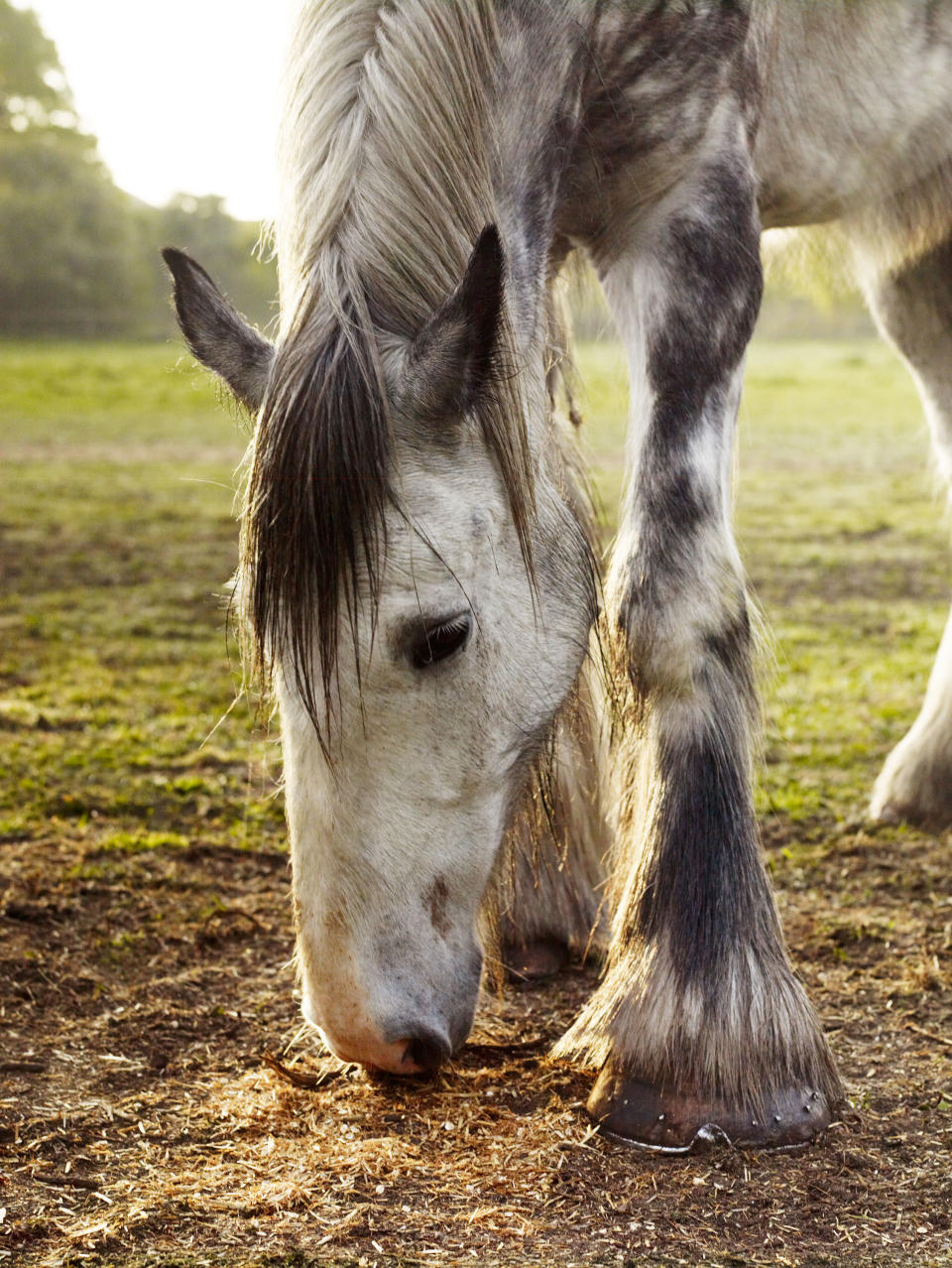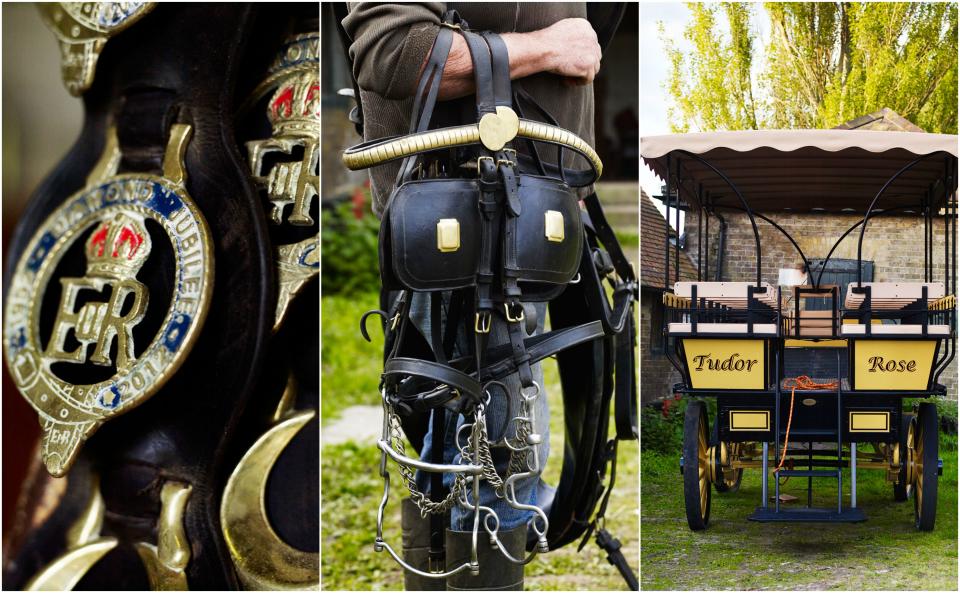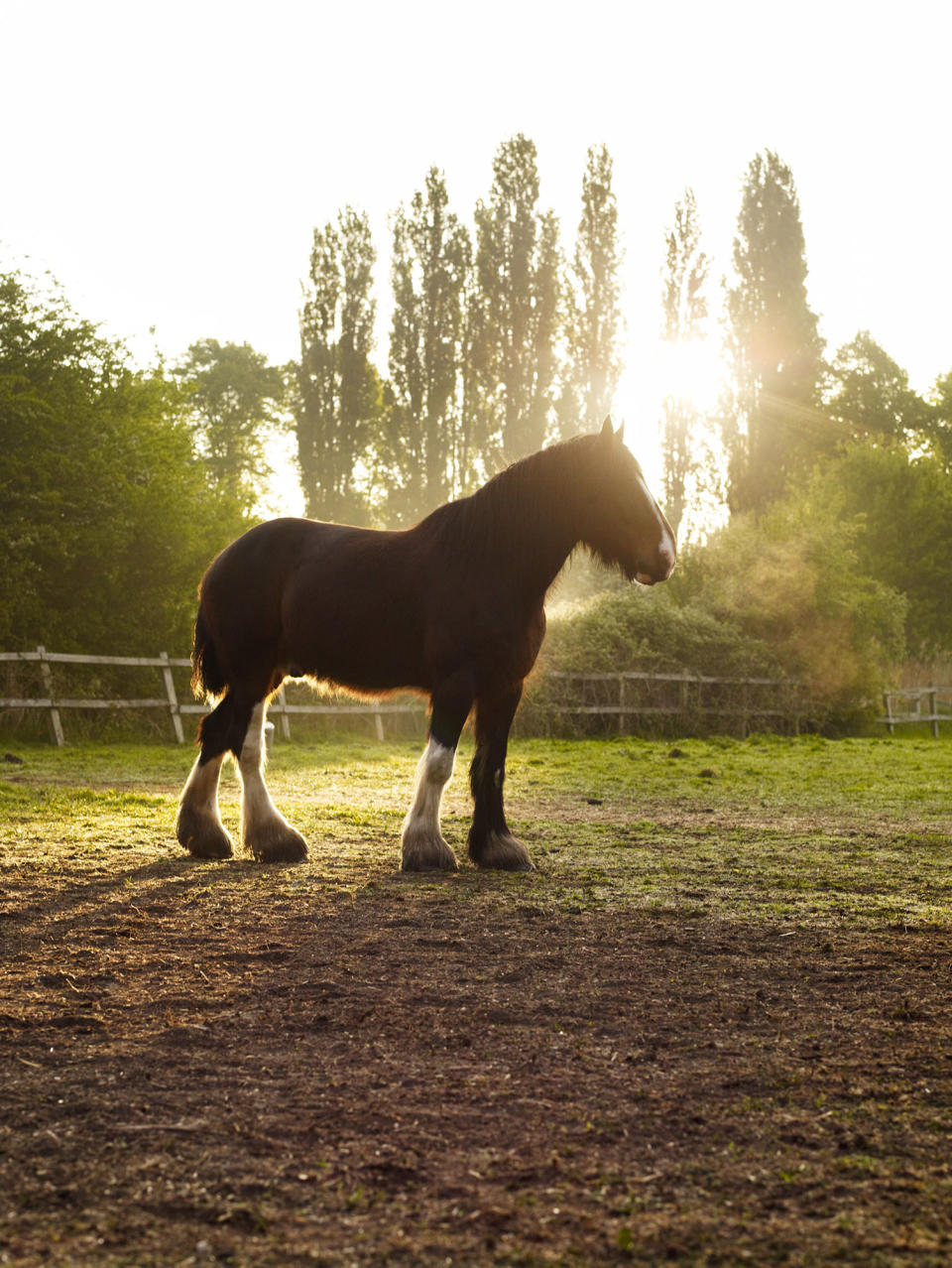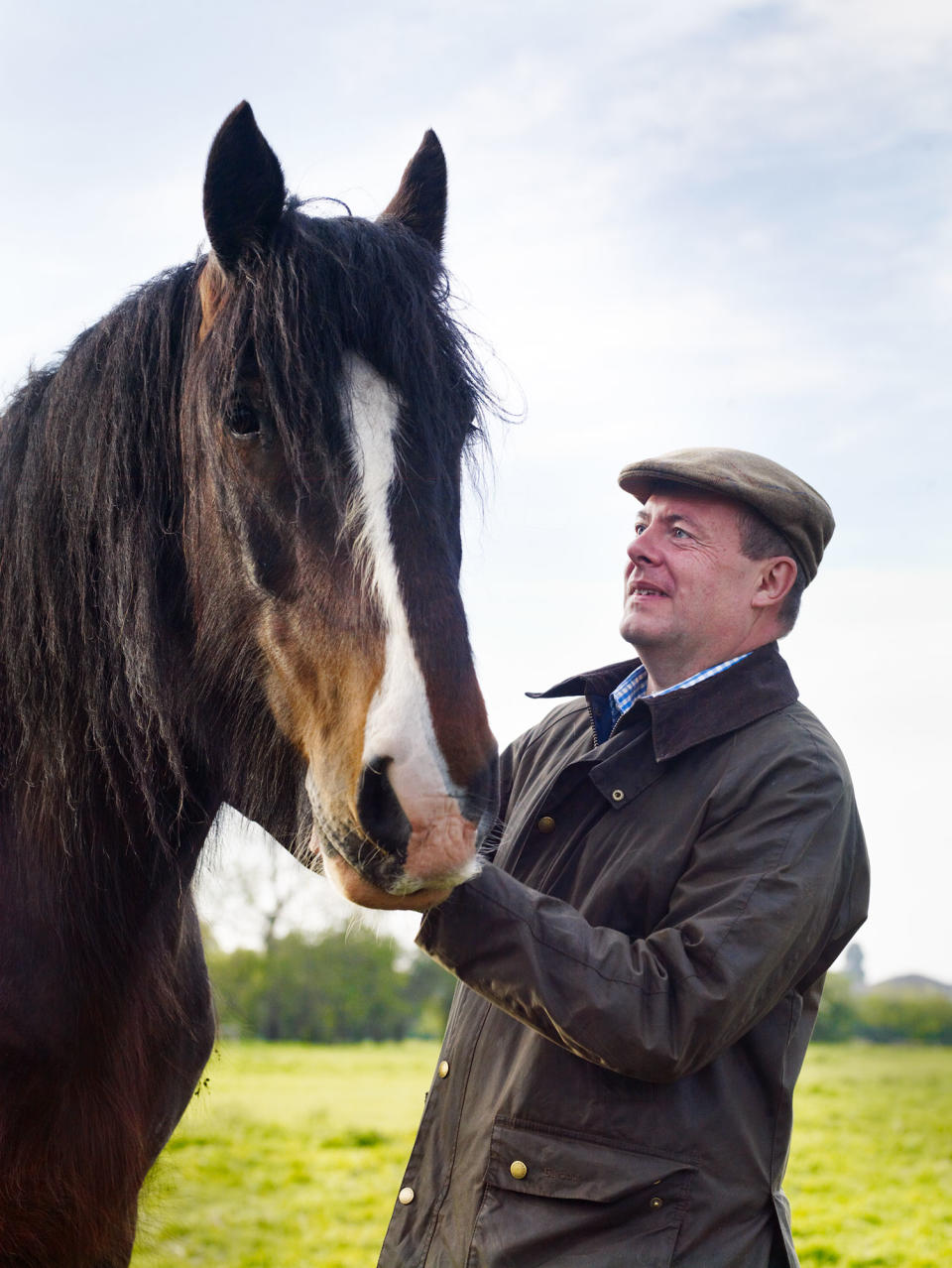Meet the last working herd of Shire horses in the UK

Squint and it could be the 19th century – the harness jingle, warm breath cloudy at the noses of mighty Shire horses pulling logs through the mulch and morning chill of an ancient forest. Only the hum of a passing car convinces you that you haven't time-travelled.
Once this would have been a common sight. In the First World War there were more than a million Shires in the UK, but now there are only 1,500 worldwide, making them rarer than the giant panda. Even things once intrinsic to the English landscape, it seems, can be left vulnerable by 'progress' if there are no champions to protect them. But watching these horses work, it seems amazing that something so vast and solid could possibly disappear from rural life so quietly.
Operation Centaur manages one of the last working herds of Shires in the UK. Here, two of its horses – Murdoch and Nobby – are demonstrating their skills, showing landowners and managers that working with heavy horses isn't a romantic ideal, but a relevant, practical way of stewarding the countryside. Local councils, the Environmental Trust and The Royal Parks are all here to be convinced once again of the continuing relevance of the 'Great Horse' upon whose shoulders England was built.

The history of the Shire horse
Shires date back to Henry VIII, who used Continental breeds to create a placid colossus, able to carry knights in armour. When swinging swords gave way to gunpowder and speed, their power was then harnessed in farm work and later pulling coal wagons and barges along canals, as the country moved into the industrial revolution. The Shire was also key in transporting, powering coaches, trams and drays. But from the 1920s on, the buzz of tractors, lorries and cars replaced the metronome of hooves. Today, the last working horses at breweries such as Wadworth and Samuel Smith are largely nostalgic.

How can Shires be used today
Operation Centaur's dream is to provide sustainable work and a future for these giants in modern society. It's not an outlandish vision – the heavy horse remains a part of land management in Scandinavia and 250,000 US farms still use equine power.
So why not here, in the UK?
The project was established by Flemish horseman and psychologist Andreas Liefooghe, along with head coachman at Surrey's Hampton Court, Edward MacDowell, with the goal of promoting their viability. Ten years on and the team has been joined by grooms Tom and Andy – who are working the horses today – and a band of dedicated volunteers.
For the group the key lies in land stewardship, protecting and enhancing biodiversity and natural heritage. Its eight working horses can play a unique role, especially in conservation management, working otherwise inaccessible places such as woodland slopes and providing solutions to conservation challenges, including bracken control in sensitive acid grassland habitats. And they do it with low everything – noise disturbance, soil compaction, impact on flora and carbon footprint. Literally and metaphorically, they tread lightly on the earth.

The organisation is funded purely by the work it does; from grassland management in the Royal Parks and Historic Royal Palaces to ad-hoc bracken rolling, harrowing, woodland and reed-bed management projects. It also works with the Thames Landscape Strategy and the Father Thames Trust, preparing the riverside for the annual Great River Race, and partners with a number of charities to help with a range of conservation projects. "In a tractor you can't hear a deer rustling or a bird singing, whereas the horses are part of it all," Andreas says.
Working in woodlands, the horses can step round saplings and fallen logs, or avoid ancient anthills during bracken rolling. At Ham House in Surrey, Operation Centaur cuts the cow parsley every year, but will postpone if the froth is still particularly enchanting. Nature, after all, doesn't always fit a contractor's schedule. Heavy-horse work also engages community interest and interaction. The equine versus tractor prize fight is a knock-out for the Shires – no one has ever created a meaningful relationship with a tractor.

At the end of the afternoon, Nobby and Murdoch stand, eyes closed in a power snooze, as Tom and Edward take questions. "People don't realise what these horses can do," Edward says. "One man and one horse can move ten tonnes of timber a day." "You have to get over the mindset they're old-fashioned," Tom adds. "We can adapt to any job and run pilot projects to see how it might work." "How long does it take to learn to work with a horse?" someone else asks. "A lifetime," he replies.
You can pick up a lot in a couple of years, though, which is why Operation Centaur is looking for apprentices to ensure these heritage skills aren't lost. For a taster, it runs heritage-skills days at its stables at Hampton Court. Today only big grey Heath is stabled; in one field, Royal and Aragon stand together in perfect symmetry. In another, Nobby, Nicodemus and Murdoch crop the grass as buttery sun warms their huge rumps. Up at the palace it's Massy and (equine) Tom's turn to pull the tourist tram. The horses all do a bit of everything, although some are better at certain jobs due to temperament and build. And, unlike show Shires, fattened up like glossy conkers, Operation Centaur's athletes are all worked until the muscle comes.

These are second-generation; the first horses here, British Shires Jim and Harry, were brought over, ironically, from Cologne ("We sang The Great Escape theme all the way back"). "Jim was probably my favourite, even now. We had a special relationship." Andreas stops, for a second. "There is something magical about an older horse; it's as if they've crossed a line and they're not just horses any more. This is why we're called Operation Centaur, because they bridge that gap." As such, he also uses the Shires in his therapy work, including anti-bullying programmes that put horses in the arena with teens so they can learn team-building.
Andreas is pragmatic but ambitious: "Heavy horses can't compete in large-scale agriculture today, but here, in these pockets of land, and in similar pockets around the country it makes sense to use horses – from viticulture and wild-flower meadows to woods and butterfly highways. We'd like to encourage more people to do this kind of work locally – to go and find these spaces around their area and see the potential."

For all the ghost horses silently ploughing fields of memory, there are flesh-and-blood ones today, ready to lean in to the harness. They belong in the landscape. With a creative look at our environment we can let them pull their weight once more.
The Last Herd by Paul Stewart, a book of photographs following the Operation Centaur Shires, is available from photographyintoart.co.uk (£34.99). For more details on apprenticeships or volunteering, visit operationcentaur.com.
This feature is from Country Living magazine. Subscribe here.
You Might Also Like

